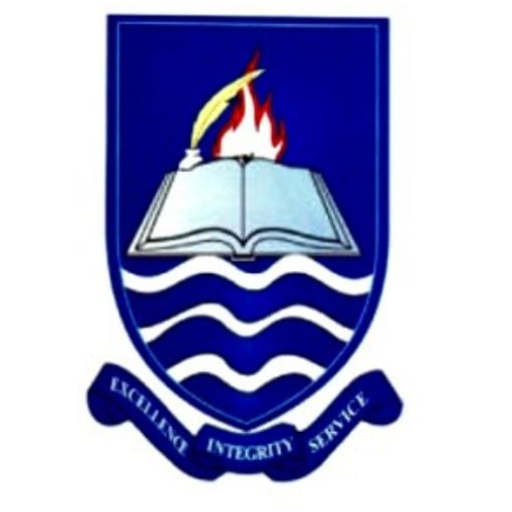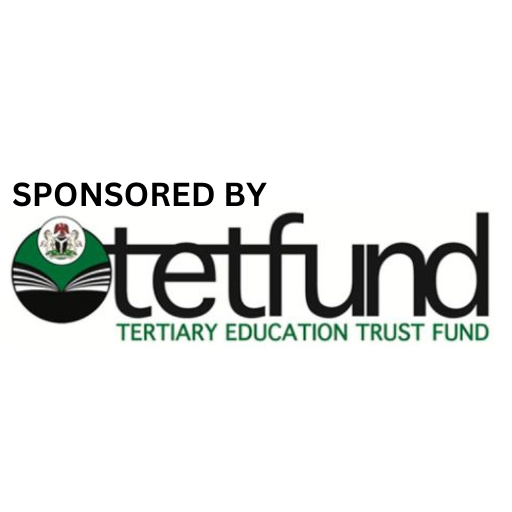Exploration of How Geometry is Linked to Learners Daily Life Actives Using the Akan Culture
DOI:
https://doi.org/10.63561/fnas-jmse.v6i3.891Keywords:
Culturally Responsive Curriculum, Ethnomathematics, AkanAbstract
The study examined how Akan culture affects senior high school geometry instruction. The Akan people live in Ashanti, the study area. The study targeted experienced mathematics teachers and Akan traditional art experts. Purposive and snowball sampling were used to recruit Ten participants, including seven experienced mathematics teachers and three craftsmen. Participants were interviewed using a semi-structured interview guide to gather detailed data. Data was thematically analysed. The analysis showed that there are a lot of interconnections between the Akan culture and school geometry in the area of Akan Games, Akan Architecture, Akan art, Akan vocation and Akan traditions. Therefore, incorporating Akan culture into geometry instruction helps students grasp the concepts and apply them to solve real-world problems. The authors concluded that the Akan culture can be applied to the teaching of geometry to enhance student active participation and promote conceptual understanding.
References
Abramczyk, A., & Jurkowski, S. (2020). Cooperative Learning as an Evidence-Based Teaching Strategy: What Teachers Know, Believe, and How They Use It. Journal of Education for Teaching: International Research and Pedagogy, 46(3), 296–308. https://doi.org/10.1080/02607476.2020.1733402 DOI: https://doi.org/10.1080/02607476.2020.1733402
Adu, E., Mereku, D. K., Assuah, C. K., & Okpoti, C. A. (2017). Effect of multimedia courseware with cooperative learning on senior high school students’ proficiency in solving linear equation word problems. African Journal of Educational Studies in Mathematics and Sciences, 13, 1–11.
Albanese, V. (2021). Bundles of Ethnomathematical Expertise Residing with Handicrafts, Occupations, and Other Activities Across Cultures. Handbook of Cognitive Mathematics, 1–34. DOI: https://doi.org/10.1007/978-3-030-44982-7_2-1
Altaftazani, D. H., Rahayu, G. D. S., Kelana, J. B., Firdaus, A. R., & Wardani, D. S. (2020). Application of the constructivism approach to improve students’ understanding of multiplication material. Journal of Physics: Conference Series, 1657(1), 012007. DOI: https://doi.org/10.1088/1742-6596/1657/1/012007
Amir, M. Z., Urrohmah, A., & Andriani, L. (2021). The effect of application of realistic mathematics education (RME) approach to mathematical reasoning ability based on mathematics self efficacy of junior high school students in Pekanbaru. Journal of Physics: Conference Series, 1776(1), 012039. DOI: https://doi.org/10.1088/1742-6596/1776/1/012039
Amir MZ, Z., Risnawati, Nurdin, E., Azmi, M. P., & Andrian, D. (2021). The Increasing of Math Adversity Quotient in Mathematics Cooperative Learning through Metacognitive. International Journal of Instruction, 14(4), 841–856. DOI: https://doi.org/10.29333/iji.2021.14448a
Ardiyani, S. M., Gunarhadi, & Riyadi. (2018). Realistic Mathematics Education in Cooperative Learning Viewed from Learning Activity. Journal on Mathematics Education, 9(2), 301–310. DOI: https://doi.org/10.22342/jme.9.2.5392.301-310
Arthur, Y. D. (2019). The Effect of Background on Students’ Interest in Mathematics: The Mediation of Students’ Motivation and Perception in Ghana. Asian Journal of Probability and Statistics, 1–13. https://doi.org/10.9734/ajpas/2019/v5i330135 DOI: https://doi.org/10.9734/ajpas/2019/v5i330135
Atta, S. A. (2023). Exploration of the Benefits of Linking the Teaching and Learning of Geometry at the Senior High School to the Akan Cultural Practices. https://doi.org/10.21203/rs.3.rs-3811653/v1 DOI: https://doi.org/10.21203/rs.3.rs-3811653/v1
Atta, S. A., & Bonyah, E. (2023a). Designing a flipped classroom instruction to improve plane geometry learning among pre-service teachers in Ghana. Contemporary Mathematics and Science Education, 4(1), ep23004. https://doi.org/10.30935/conmaths/12674 DOI: https://doi.org/10.30935/conmaths/12674
Atta, S. A., & Bonyah, E. (2023b). Teaching mathematics for social justice: The challenges and the prospects in the Ghanaian senior high schools. Journal of Mathematics and Science Teacher, 3(1), em033. https://doi.org/10.29333/mathsciteacher/13082 DOI: https://doi.org/10.29333/mathsciteacher/13082
Baah-Duodu, S., Osei-Buabeng, V., Cornelius, E. F., Hegan, J. E., & Nabie, M. J. (2020). Review of Literature on Teaching and Learning Geometry and Measurement: A Case of Ghanaian Standards Based Mathematics Curriculum. International Journal of Advances in Scientific Research and Engineering, IJASRE (ISSN: 2454-8006), 6(3), 103–124. DOI: https://doi.org/10.31695/IJASRE.2020.33766
Bada, S. O., & Olusegun, S. (2015). Constructivism learning theory: A paradigm for teaching and learning. Journal of Research & Method in Education, 5(6), 66–70.
Barnes, H. (2004). Realistic mathematics education: Eliciting alternative mathematical conceptions of learners. African Journal of Research in Mathematics, Science and Technology Education, 8(1), 53–64. DOI: https://doi.org/10.1080/10288457.2004.10740560
BAUTISTA, J., Samonte, I., Improgo, C. M., & Gutierrez, M. R. (2020). Mother Tongue versus English as a Second Language in Mathematical Word Problems: Implications to Language Policy Development in the Philippines: Implications to Language Policy Development in the Philippines. International Journal of Language and Literary Studies, 2(2), 18–29. DOI: https://doi.org/10.36892/ijlls.v2i2.283
Byrne, D. (2022). A worked example of Braun and Clarke’s approach to reflexive thematic analysis. Quality & Quantity, 56(3), 1391–1412. https://doi.org/10.1007/s11135-021-01182-y DOI: https://doi.org/10.1007/s11135-021-01182-y
Chahine, I. (2013). Mathematics teachers’ explorations of indigenous mathematical knowledge systems through immersion in African Cultures. http://funes.uniandes.edu.co/4070/
CRDD, MOE. (2017). MINISTRY OF EDUCATION. Core Mathematics Syllabus for Senoir High Schools in Ghana, 66.
Dasini, P. (2022). Analysis of Realistic Mathematics Approach with Ethnomathematics On Students’ Mathematical Communication Ability. Holistic Science, 2(2), 106–110. DOI: https://doi.org/10.56495/hs.v2i2.50
den Heuvel-Panhuizen, V. (2020). National Reflections on the Netherlands Didactics of Mathematics: Teaching and Learning in the Context of Realistic Mathematics Education. Springer Nature. DOI: https://doi.org/10.1007/978-3-030-33824-4
Desai, S., Bush, S., & Safi, F. (2021). Mathematical Representations in the Teaching and Learning of Geometry. The Electronic Journal for Research in Science & Mathematics Education, 25(4), 6–22.
Dowker, A. (2021). Culture and language: How do these influence arithmetic? DaZ-Forschung, 65. DOI: https://doi.org/10.1515/9783110661941-004
Ertmer, P. A., & Newby, T. J. (2013). Behaviorism, Cognitivism, Constructivism: Comparing Critical Features From an Instructional Design Perspective. Performance Improvement Quarterly, 26(2), 43–71. https://doi.org/10.1002/piq.21143 DOI: https://doi.org/10.1002/piq.21143
Fantinato, M. C., & Leite, K. G. (2020). Ethnomathematics Research on Indigenous Peoples’ Knowledge and Practices. Ethnomathematics in Action: Mathematical Practices in Brazilian Indigenous, Urban and Afro Communities, 111–137. DOI: https://doi.org/10.1007/978-3-030-49172-7_7
Gay, G. (2018). Culturally responsive teaching: Theory, research, and practice. teachers college press. https://books.google.com/books?hl=en&lr=&id=uD9qDwAAQBAJ&oi=fnd&pg=PP1&dq=gay+2002+culturally+responsive+teaching&ots=v0sA_b0mb7&sig=0oJMP2hH8KYbzpXLM-uycjDmWgQ
Hu, C.-P., & Chang, Y.-Y. (2017). John W. Creswell, Research Design: Qualitative, Quantitative, and Mixed Methods Approaches. Journal of Social and Administrative Sciences, 4(2), Article 2. https://doi.org/10.1453/jsas.v4i2.1313
Japelj Pavesic, B., Korsn??kov??, P., & Meinck, S. (2022). Dinaric perspectives on TIMSS 2019: Teaching and learning mathematics and science in South-Eastern Europe. https://doi.org/10.1007/978-3-030-85802-5 DOI: https://doi.org/10.1007/978-3-030-85802-5_1
Kothari, C. R. (2017). Research Methodology methods and techniques second edition. New Age.
Kurniawan, H., Susanti, E., Widodo, S. A., & Perbowo, K. S. (2023). Ethnomathematics: Concept of Geometry and Cultural Wisdom In The Construction of The Minangkabau Gadang House. Mathline: Jurnal Matematika Dan Pendidikan Matematika, 8(4), 1259–1270. DOI: https://doi.org/10.31943/mathline.v8i4.474
Lasmawan, I. W., & Budiarta, I. W. (2020). Vygotsky’s zone of proximal development and the students’ progress in learning (A heutagogcal bibliographical review). JPI (Jurnal Pendidikan Indonesia), 9(4), 545–552. DOI: https://doi.org/10.23887/jpi-undiksha.v9i4.29915
Meaney, T., Trinick, T., & Allen, P. (2021). Ethnomathematics in education: The need for cultural symmetry. Handbook of Cognitive Mathematics, 1–29. DOI: https://doi.org/10.1007/978-3-030-44982-7_4-1
MOE, CRDD. (2010). TEACHING SYLLABUS FOR FOOD AND NUTRITION (SHS 1—3). Ministry of Education, Accra, Ghana.
Okumus, S., Özdilek, Z., & Arslan, A. (2020). The Effect of Cooperative Learning Methods and Individual Learning Method on Pre-Service Science Teachers’ Sub-Micro Level Conceptual Understanding at Equilibrium Chemistry. Educational Policy Analysis and Strategic Research, 15(3), 394–425. DOI: https://doi.org/10.29329/epasr.2020.270.19
Oppong-Gyebi, E., Amoako Atta, S., Kwadwo, A.-A., Belbase, S., Bonyah, E., & Peprah Opoku, M. (2023). High School Teachers’ Perceptions and Practices of Mathematics Curriculum in Ghana. Education Research International, 2023, e4304267. https://doi.org/10.1155/2023/4304267 DOI: https://doi.org/10.1155/2023/4304267
Owusu-Darko, I., Sabtiwu, R., Doe, F., Owusu-Mintah, B., & Ofosu, E. K. (2023). Akan ethnomathematics: Demonstrating its pedagogical action on the teaching and learning of mensuration and geometry. Journal of Mathematics and Science Teacher, 3(2). DOI: https://doi.org/10.29333/mathsciteacher/13281
Pathan, H., Memon, R. A., Memon, S., Khoso, A. R., & Bux, I. (2018). A critical review of Vygotsky’s socio-cultural theory in second language acquisition. International Journal of English Linguistics, 8(4), 232. DOI: https://doi.org/10.5539/ijel.v8n4p232
Prahmana, R. C. I., Sagita, L., Hidayat, W., & Utami, N. W. (2020). Two Decades of Realistic Mathematics Education Research in Indonesia: A Survey. Infinity Journal, 9(2), 223–246. DOI: https://doi.org/10.22460/infinity.v9i2.p223-246
Qiquan, Z. (2021). A Review of the Paedological Research of the Vygotskian School. The Logic of China’s New School Reforms, 207–241. DOI: https://doi.org/10.1163/9789004473300_013
Rodríguez-Nieto, C. A., & Alsina, Á. (2022). Networking Between Ethnomathematics, STEAM Education, and the Globalized Approach to Analyze Mathematical Connections in Daily Practices. Eurasia Journal of Mathematics, Science and Technology Education, 18(3), em2085. https://doi.org/10.29333/ejmste/11710 DOI: https://doi.org/10.29333/ejmste/11710
Van den Heuvel-Panhuizen, M. (2020). A spotlight on mathematics education in the Netherlands and the central role of Realistic Mathematics Education. In National Reflections on the Netherlands Didactics of Mathematics (pp. 1–14). Springer, Cham. DOI: https://doi.org/10.1007/978-3-030-33824-4_1
Wittmann, E. C. (2005). Realistic Mathematics Education, past and present. Nieuw Archief Voor Wiskunde, 6(4), 294.







